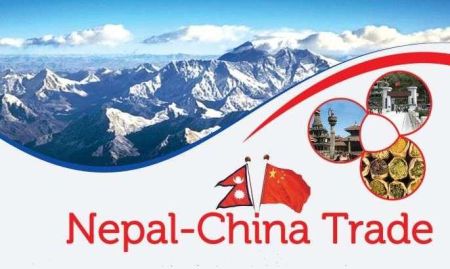--By Vaijayanti Khare
In personal and social life, business, sports, vocational and a-vocational activities alike, individuals, groups and organisations compete with each other in myriad ways. Competition seems to be an accepted norm of life and performance. Not surprisingly, theorists have long been interested in whether competition helps or hinders performance. Many like the Scottish philosopher and economist Adam Smith contend that competition enhances motivation and is beneficial for performance, echoing the Roman poet Ovid - “A horse never runs so fast as when he has other horses to catch up and outpace”.
Many others like the English philosopher and political theorist Thomas Hobbes espouse the opposite view, arguing that competition undermines motivation and is detrimental to performance; echoing Hungarian composer Bella Bartok - “Competitions are for horses, not artists”. Both of these contrasting positions on the competition–performance relation continue to be espoused within broad and diverse areas of the contemporary psychological studies, including educational psychology, industrial–organisational psychology, social–personality psychology, and sport and exercise psychology.
Most practices in organisations and education set-ups have for too long been based on the notion that competition would increase performance. Recent research and meta-analyses bring us a very sobering result: that neither side is correct! Instead, there is strong indication that competition has no noteworthy direct relation with performance. What is the significance of this to the business setting we work in? How does strategy and people loop in performance and competition?
Competition may be conceptualized in three distinct ways: As a characteristic of the person (trait competitiveness), as a characteristic of the perceived situation (perceived environmental competitiveness), and as a characteristic of the actual situation (structural competition). All of these conceptualizations focus on interpersonal competition—that is, competition between individuals. Competition may involve other aspects, such as intrapersonal competition (competition with oneself) and intergroup competition (competition between groups). Structural competition represents an actual situation in which two or more people vie for a mutually exclusive achievement outcome and trait competitiveness represents a dispositional preference to compete with others in achievement situations.
Organisations are achievement settings, thus bring in the structural and the trait competitiveness where the tendency to perform and compete are appetites or aversions. Business plans, goal setting, team and individual performance, promotion, incentives and rewards set the stage for the desires or fears of competition. It directs behaviour but does not provide specific guidelines for how one may accomplish or address the desire or fear that has been activated.
Performance is defined by its standard of evaluation, the three standards are: a task-based standard (how one is doing compared to what the task demands), a self-based standard (how one is doing compared to one’s own intrapersonal trajectory), and an other-based standard (how one is doing compared to others).
Organisations that do not define and measure all the three standards, mostly, and wrongly, impose that competition must directly bring about performance. It is true that competition has no direct effect on performance; however, it evokes two distinct processes, one that facilitates performance and one that undermines performance. This is where strategy comes in. To bring in behaviours and structures that lead to performance-achievement and not performance-avoidance.

As an example, let me take you to the period when Hyundai entered the auto market and shook the then defending leader, Maruti-Suzuki (MS), in our Nepal market. The MS team saw this competition as a force that could not be met with. The sales and marketing discussions were despondent and lacked the necessary strategy planning that would help performance. Infact, performance went down as the behaviour to perform slipped. Competition became detrimental, it became an excuse for lesser performance.
Strategy is a major channel of connections between the competitive environment and resources. On the one hand, strategy acts as a fulcrum in the deployment of firm resources in the competitive environment with the aim to generate sustained competitive advantage, thus modifying the competitive environment. And, on the other hand, strategy is dependent on and constrained by the controlled resources, it coordinates the development and protection of existing resources and the creation or acquisition of new resources, taking into account the competitive environment.
The essence of strategy formulation is coping with competition. Yet it is easy to view competition too narrowly and too pessimistically. While one sometimes hears executives complaining to the contrary, intense competition in an industry is neither coincidence nor bad luck. Moreover, in the fight for market share, competition is not manifested only in the other players. An inward looking approach would show how the top management is the first crucial player in handling competition.
A simplistic example: if two executives shoveling snow off a sidewalk hold the goal of finishing as quickly as possible, they can find a way to work together and coordinate their efforts. On the other hand, if they are competing to see who can shovel their half of the sidewalk faster, each one may end up shoveling snow onto the other’s side. As a result, it may take both longer to finish the task because they interfere with one another’s progress, and they could also view each other negatively. Sounds familiar? Yes, many an organization here, the MD, CEO, and ED in particular, set up their key persons as competitors within the functional set up. The funny thing though is that each of them knows exactly what the ‘game’ is. Thus, competition not only drops performance, individual and organisational, but also makes a sham of any exercise towards developing an effective strategy that would help meet competitive environments leading to superior performance.

And now, let us bring in the resources. An organisation’s resources include all assets, capabilities, organisational processes, firm attributes, information, competencies, skills and knowledge controlled by a firm that enable the firm to conceive and implement strategies. Simplistically, many a top management abbreviates it to land, labour, capital and infrastructure of the organisation. There is enough success in handling the land, capital and infrastructure – all tied up with finances, however, there is a lot wanting in the area of handling the human capital, which ties the capabilities, organisational processes, firm attributes, information, competencies, skills and knowledge: in short– competitiveness, performance and strategy.
Research by McKinsey, the Harvard Business Review and other think tanks around the globe consistently find that CEOs worldwide see human capital as a top challenge, and they rank HR as only the eighth or ninth most important function in a company. The top management knows that it depends on the company’s human resources to achieve success. Businesses don’t create value; people do. But if you peel back the layers at the vast majority of companies, especially here in Nepal, you find MDs/EDs who are distanced from and often dissatisfied with their chief human resources officers and the HR function in general. That has to change.
It is the people aspect that would turnaround the equation of ‘competition-performance-strategy-resources’ in an organization. At one of the leading healthcare providers here, the focus on capital spending on equipment and high-end medical technology lacked the backing of building the people resources that would make the investment effective. The CFO-CEO-HR triad was in fact at loggerheads right from the decision to invest to the usage of the same. In another organisation, the MD’s pet quote from The Art of War by San Tzu, was ‘we have many shooters, but not a killer’. And who else but he can change it? People recruitment is an art and a strategy that has to be backed up with continuous up-skilling.
Let’s be clear: It is up to the CEO to elevate HR and to bridge any gaps that prevent it from becoming a strategic partner. After all, it was the CEOs who boosted the finance function beyond simple accounting. They were also responsible for creating the marketing function from what had been strictly sales.
The result will be an HR that is as much a value adder as the CFO. Rather than being seen as a supporting player brought in to implement decisions that have already been made, the head of HR will have a central part in corporate decision-making and will be thus selected and prepared for that role.
It is amply proven by the successful business and industry giants that care and attention to the ‘people – strategy – performance – competition’ in that order has created success and value. The organisations that pay attention to ‘people before strategy, performance before competition’ are the leaders of industry and creators of competitive environments in which they are the drivers of strategy and the torch-bearers of sustained success.
Vaijayanti Khare is known for her dynamic engagements in the corporate, academic, social and development fi elds in Kathmandu over the past decade. Her writings are a refl ection of her hands-on work, insights, studies, success and challenges.





















